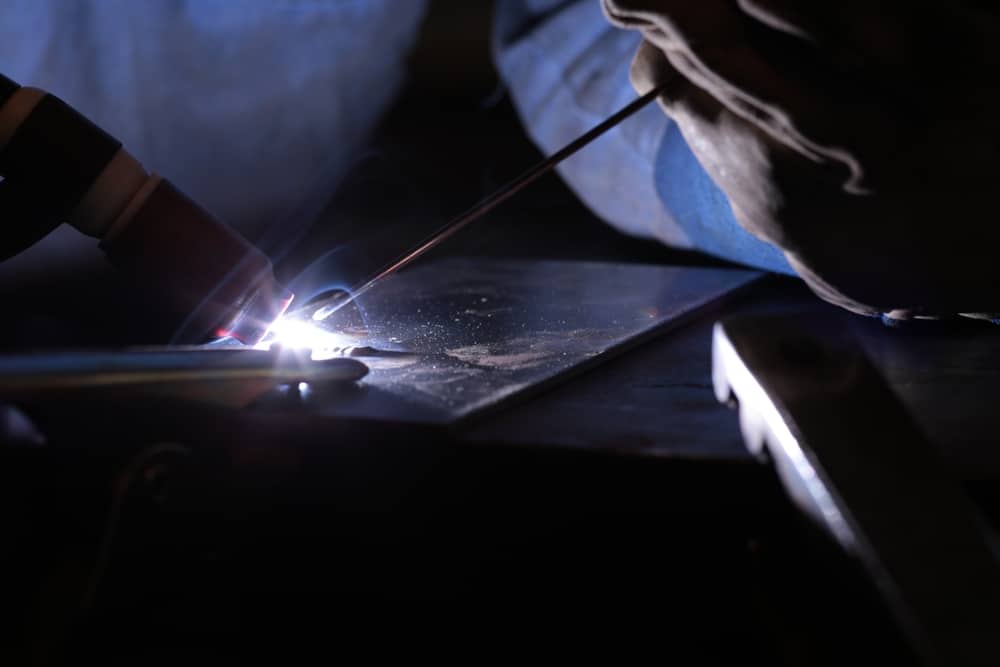
In welding process discussions, importance often is given to the metal’s chemical composition, the heat input, and other weld parameters. But the importance of shielding gas for the creation of pure and high-quality welds should also be considered. A wide variety of shielding gases—such as argon, helium, hydrogen, and nitrogen—protect the weld pool from atmospheric impurities.
However, shielding gas selection will depend on the material being welded and the welding process. Understanding these welding shielding gas or gas blends and their applicability for different materials is crucial for successful weld fusion.
Types of Welding Shielding Gases
Welding shielding gases are usually inert to prevent chemical interference with the material welded and remain consistent even in extreme operating conditions. These pure gases shield the arc from external impurities, including dust, slags, or atmospheric gases. As a result, welders can prevent air bubble formation in the weld pool while ensuring clean, smooth welds. The most common weld shielding gases include:
Inert Gases
Argon: A noble gas with low reactivity, argon is the most commonly used and cost-effective shielding gas. Argon is preferable for keeping the air out while maintaining arc stability, especially when working with metals like aluminum, titanium, or steel. With MIG and TIG welding, argon is used in the primary welding stage or for purging the underside of the joint.
Helium: Helium has been a favorite choice for scientific experiments due to its unique properties. It is lighter than air; it doesn’t freeze; and, it can be liquified at a temperature below 450°F. In terms of welding, these properties mean that helium requires a higher flow rate when compared with gases like carbon dioxide or argon and provides good thermal conductivity. Thus, at high voltage, a hotter arc can be created. When blended with a gas like argon, helium’s properties can be enhanced so that a consistent arc can be established for optimal heat input and penetration. Helium is ideal for welding metals like aluminum, copper, and magnesium.
When mixed, argon and helium can improve the heat transfer properties.
Semi-Inert Gases
- Carbon dioxide (CO2): In MIG welding, carbon dioxide improves weld speed and depth of penetration while enhancing the mechanical properties of the joint. However, it can also allow more weld splatter and lead to poor weld quality. Consequently, CO2 is preferred more as a mixture gas.
- Oxygen: Small amounts of oxygen are generally desired to mix with primary gases like argon. In the optimal combination, oxygen can help improve the fluidity of the molten metal, stabilize the arc, and minimize splatter. However, if used in excess, oxygen increases the risk of embrittlement.
- Nitrogen: Nitrogen is beneficial when arc stability and improved weld penetration are required and is mostly used as a shielding gas for laser welding applications. When blended with other gases, nitrogen can enhance the mechanical properties of nitrogen-rich metals by preventing nitrogen loss.
- Hydrogen: When welding nickel and some grades of stainless steel, hydrogen can be used as the shielding gas. In a mixture with CO2 and argon, hydrogen can assist in narrow gap welding with improved arc temperature, molten metal fluidity, and weld penetration to provide a smooth and clean weld surface. However, when used with metals like steel or aluminum, hydrogen may introduce problems like hydrogen embrittlement and weld porosity.
These welding shielding gases, when used in the appropriate mixtures, can balance one another to produce an excellent weld result. Some effective mixtures include:
| Argon-CO2 | Suitable for MIG welding, specifically the carbon steel More CO2 content is desired for thicker steelReduces weld splatter and creates a smooth weld |
| Argon- Helium | Suitable for welding aluminum and other nonferrous metalsWider weld profile |
| Argon-Oxygen | Carbon steel welding (not suitable for stainless steel) |
| Argon-Hydrogen | Prevents oxidation to create a clean weld when TIG welding |
| Nitrogen-Hydrogen | Austenitic stainless steel weldingImproves weld speed, penetration, and metal’s mechanical properties |
| Argon-Helium-CO2 | Suitable for austenitic stainless steel, carbon steel, or aluminum welding |
| Argon-Oxygen-CO2 | Improves fluidity of the molten metal in the weld pool as well as the weld speed |
Which Shielding Gases Should I Choose?
The wide range of welding shielding gases discussed above serves a variety of purposes in different welding applications. As such, it is necessary to understand that the same gas or mixture may produce a completely different result when used with different welding processes. Argon, the common choice for TIG welding, ideally protects the weld pool from oxygen invasion and cools the welding torch. However, if used for MIG welding, argon will reduce the arc voltage and power and lead to an unstable arc and tall beads. In contrast, when non-inert gases like CO2 or oxygen, which are common choices for MIG, are used for TIG welding, their reactiveness can cause defects like porosity, cracks, or the burning of tungsten electrodes.
The selection of correct shielding gas for the desired welding process is, therefore, an important consideration. Not only is the correct shielding gas necessary for high-quality output but also to ensure weld safety. Adaptation of orbital welding can enhance outcomes and provide flow rate control through automated measures. By using the most compatible gas in pure or mixed form with the correct welding process, the best possible weld output can be achieved.
Arc Machines, Inc. provides high-quality automated orbital TIG welding equipment that offer extraordinary welding process control and optimal weld results. To learn more about our automated systems and compatible welding shielding gases, contact us today. For inquiries regarding products, contact sales@arcmachines.com. For service inquiries, contact service@arcmachines.com. Arc Machines welcomes the opportunity to discuss your specific needs.




